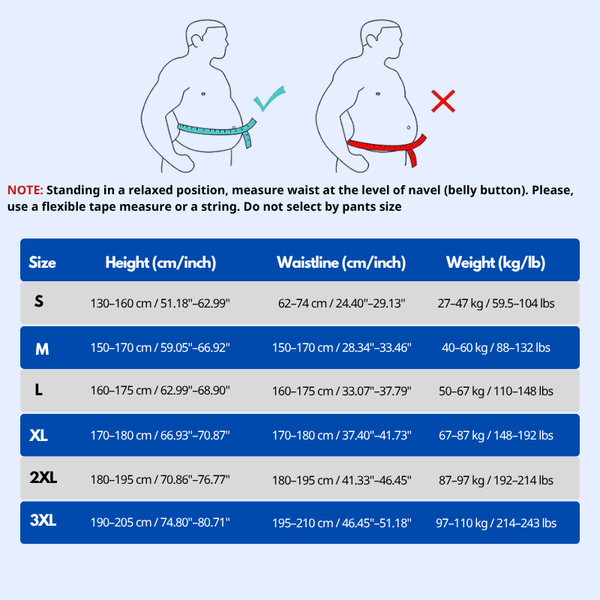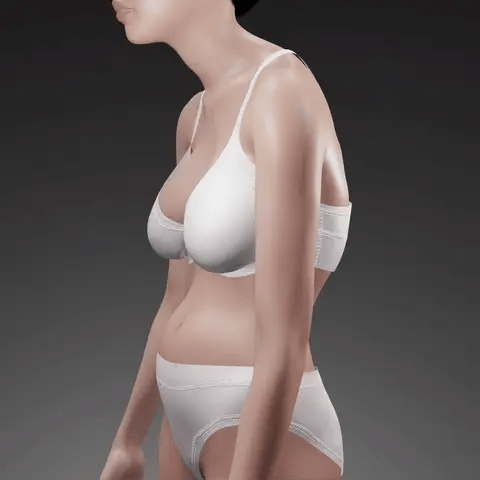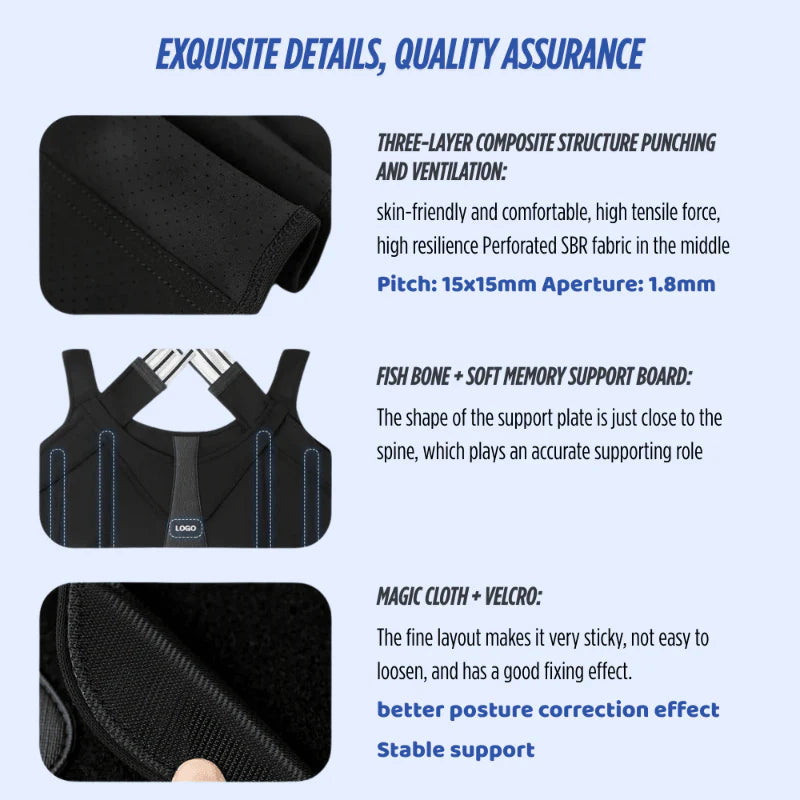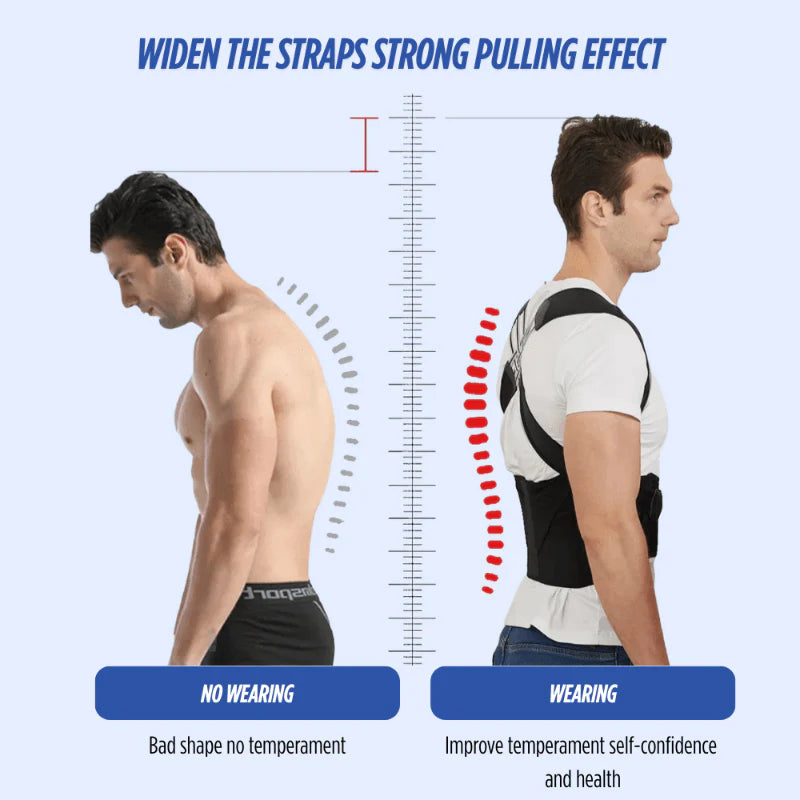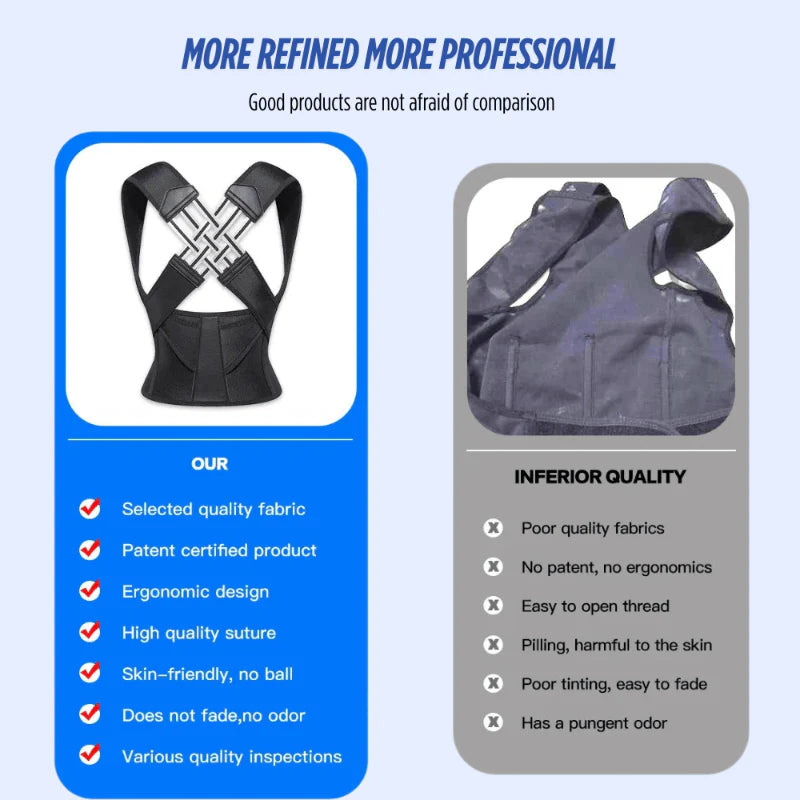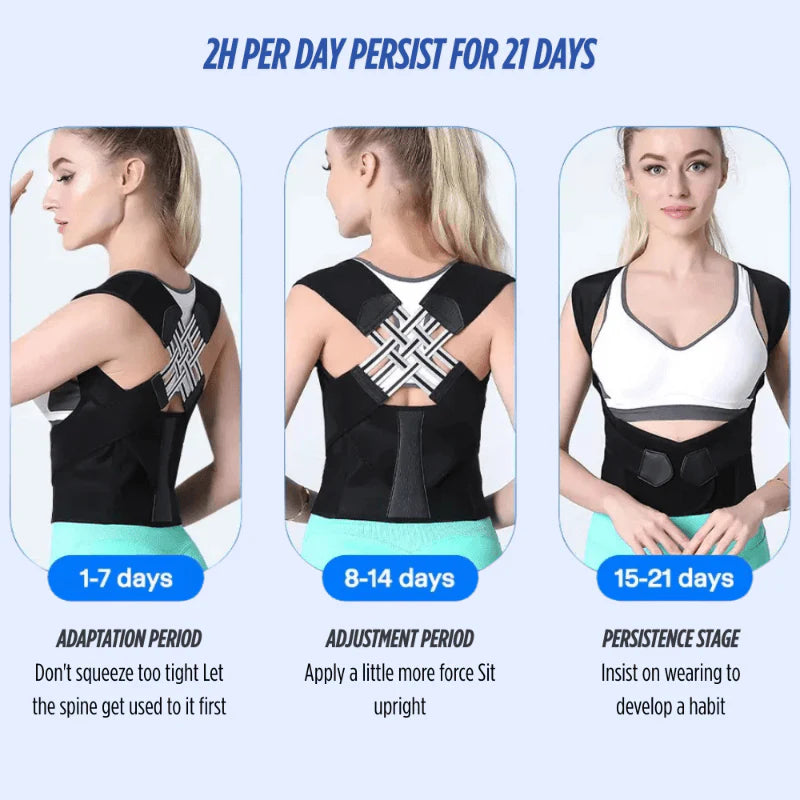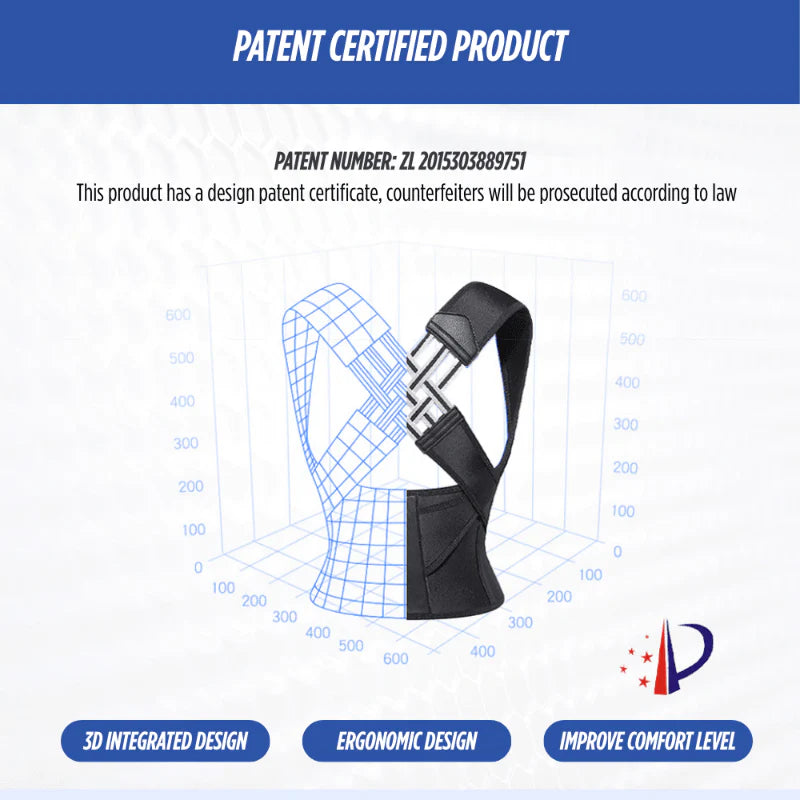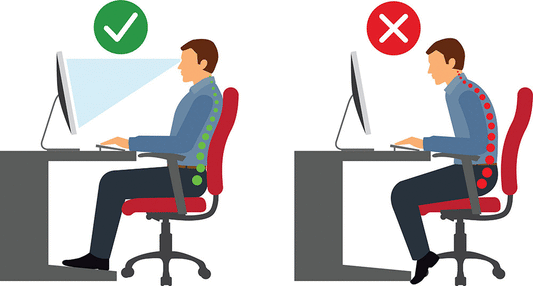In our fast-paced, tech-driven world, the human body is being pushed into positions it was never designed for.
We sit too long, slump too easily, and stretch too rarely — and while these habits might seem harmless, they’re quietly wreaking havoc on our health.
Poor posture isn’t just about how you look.
It’s about how your body functions.
And if left unchecked, it can lead to a cascade of physical, emotional, and even neurological consequences that build up silently until they become impossible to ignore.
In this article, we’ll take a deep dive into:
-
The underlying causes of poor posture in modern life
-
The immediate physical effects you may already be feeling
-
The serious long-term damage it can cause if left untreated
-
And most importantly: how to take back control using practical techniques and smart tools like VerteGuard, a posture training support designed to correct bad habits and relieve strain.

Part 1: How Poor Posture Becomes the New Normal — Without You Realizing It
Let’s be honest: no one wakes up and decides, “Today I’m going to slouch all day!”
Poor posture creeps in — quietly, gradually — until it becomes your body’s default setting.
So, what exactly is causing this shift?
1. Tech Neck from Digital Devices
Most people spend 6–10 hours a day staring at screens. Smartphones, tablets, laptops — they all invite us to crane our necks forward, creating what’s known as forward head posture.
For every inch your head juts forward, your spine takes on an additional 10 pounds of pressure. Multiply that by hours per day, and the toll becomes clear.
2. Poor Ergonomic Setup
Chairs that are too low, desks that are too high, monitors that are off-center — these all push your body into unnatural positions. Without lumbar support, your lower spine flattens. Without arm support, your shoulders round forward. Over time, these minor issues snowball.
3. Workplace Stress and “Tunnel Focus”
When we’re deeply focused on tasks, our body awareness fades. We become heads in screens — not bodies in chairs. The more you concentrate, the less you notice your slouch. Ironically, being productive often leads to worse posture.
4. Lack of Postural Feedback
Our ancestors were constantly moving, adjusting, balancing — their bodies received real-time input from nature. Today, our chairs don’t care if we slump. Our bodies don’t get warned unless there’s pain — and pain is always the last signal.
Part 2: The Hidden Effects of Poor Posture — Already Happening in Your Body
Even if you don't feel "injured," poor posture is already changing the way your body operates.
Here are just a few things that happen when you sit or stand with poor alignment:
1. Neck and Shoulder Tension
Slouching shortens chest muscles and overworks the upper trapezius and levator scapula. Result? Stiff neck, tension headaches, and tight shoulders — especially after long screen sessions.
2. Low Back Pain
Rounded posture causes pelvic tilt and disc compression, which may lead to lower back aches, especially when standing up after sitting too long.
3. Numbness and Tingling in Extremities
When your spinal nerves get compressed, you might notice numbness, tingling, or weakness in your hands or feet — warning signs of nerve impingement.
4. Restricted Breathing and Poor Circulation
Slouching compresses your diaphragm and lungs. You breathe less deeply, take in less oxygen, and over time your body and brain suffer from reduced oxygenation and circulation.
5. Fatigue and Lack of Focus
All of this leads to mental fog, slower reaction times, and low energy. Your body is fighting to function in a compromised state.

Part 3: Long-Term Consequences – What Happens If You Don’t Fix It
If these short-term issues sound unpleasant, the long-term outlook is even more serious.
Here’s what’s at stake when poor posture becomes chronic:
Spinal Deformities
Your spine can restructure itself around your habits. This leads to:
-
Kyphosis (hunched upper back)
-
Lordosis (overarched lower back)
-
Scoliosis (unnatural lateral curves)
These deformities don’t just change how you look — they affect mobility, nerve health, and stability.
Nervous System Stress
When vertebrae press on nerves, your autonomic nervous system becomes dysregulated.
Symptoms include:
-
Anxiety
-
Rapid heart rate
-
Sleep problems
-
Digestive issues
You may treat these with medication — but the root cause is structural.
Cardiopulmonary Dysfunction
Slumped posture reduces lung capacity by up to 30%, increasing the risk of:
-
Heart strain
-
Shallow breathing
-
Oxygen deprivation in muscles and brain
-
Chronic fatigue syndrome-like symptoms
Loss of Mobility and Independence
Over time, your joints degenerate, your muscles weaken, and your balance worsens. For many, this leads to falls, surgeries, or loss of independence in later life.
Part 4: The Solution – Train Your Body Back to Alignment With VerteGuard
So what’s the fix? How do you actually correct your posture in a way that’s simple, sustainable, and effective?
You could try:
-
Hiring a posture coach ($80/session)
-
Seeing a physical therapist (time-consuming)
-
Buying expensive ergonomic furniture (bulky, expensive)
But here’s a better way:
VerteGuard — Your Smart Posture Training Assistant
VerteGuard is a wearable posture support system designed to gently guide your body into better alignment — without forcing or restricting you.
It combines:
-
Adjustable tension bands to cue spinal alignment
-
Lightweight, breathable material that’s invisible under clothing
-
Wearable training principles — it helps your body learn instead of just hold
Unlike traditional braces, VerteGuard doesn’t do the work for you — it trains you to do it yourself.
By wearing VerteGuard 30–60 minutes a day:
-
Your muscles build strength and memory around the right alignment
-
You receive real-time feedback when you start to slump
-
Your awareness improves naturally, even when you’re not wearing it

Part 5: How VerteGuard Fits Into a Realistic Posture Routine
Improving posture isn’t about being perfect. It’s about making small changes consistently.
Here’s how to start:
Week 1: Awareness
-
Use VerteGuard during your most posture-challenging moments (work, screen time)
-
Do a daily "wall test" — stand straight against a wall and feel the alignment
Week 2: Activation
-
Add basic posture exercises: bird-dogs, chin tucks, shoulder blade squeezes
-
Let VerteGuard cue your posture while you train strength and mobility
Week 3+: Habit-Building
-
Wear VerteGuard as needed throughout the day
-
Link posture to daily cues (check posture every time you get a text or email)
-
Track progress — take weekly photos or journal how you feel
Final Thoughts – Your Spine is Your Lifeline. Start Protecting It Today.
The spine is central to every movement, organ function, and emotion. It supports you, literally and figuratively.
Poor posture isn’t just inconvenient — it’s dangerous.
But the good news is: it’s 100% fixable.
With awareness, consistency, and the right tools — like VerteGuard — you can reverse years of damage and feel better than you have in years.
Ready to get started?
👉 Order VerteGuard now – Available with:
-
Fast 3-day shipping
-
Size options for all body types
-
Discounts on bundles (buy one for work, one for home)
-
Satisfaction guarantee – or your money back

Don’t wait until your back “gives out.”
Start now. Realign your posture. Reclaim your comfort.
Your body will thank you.









